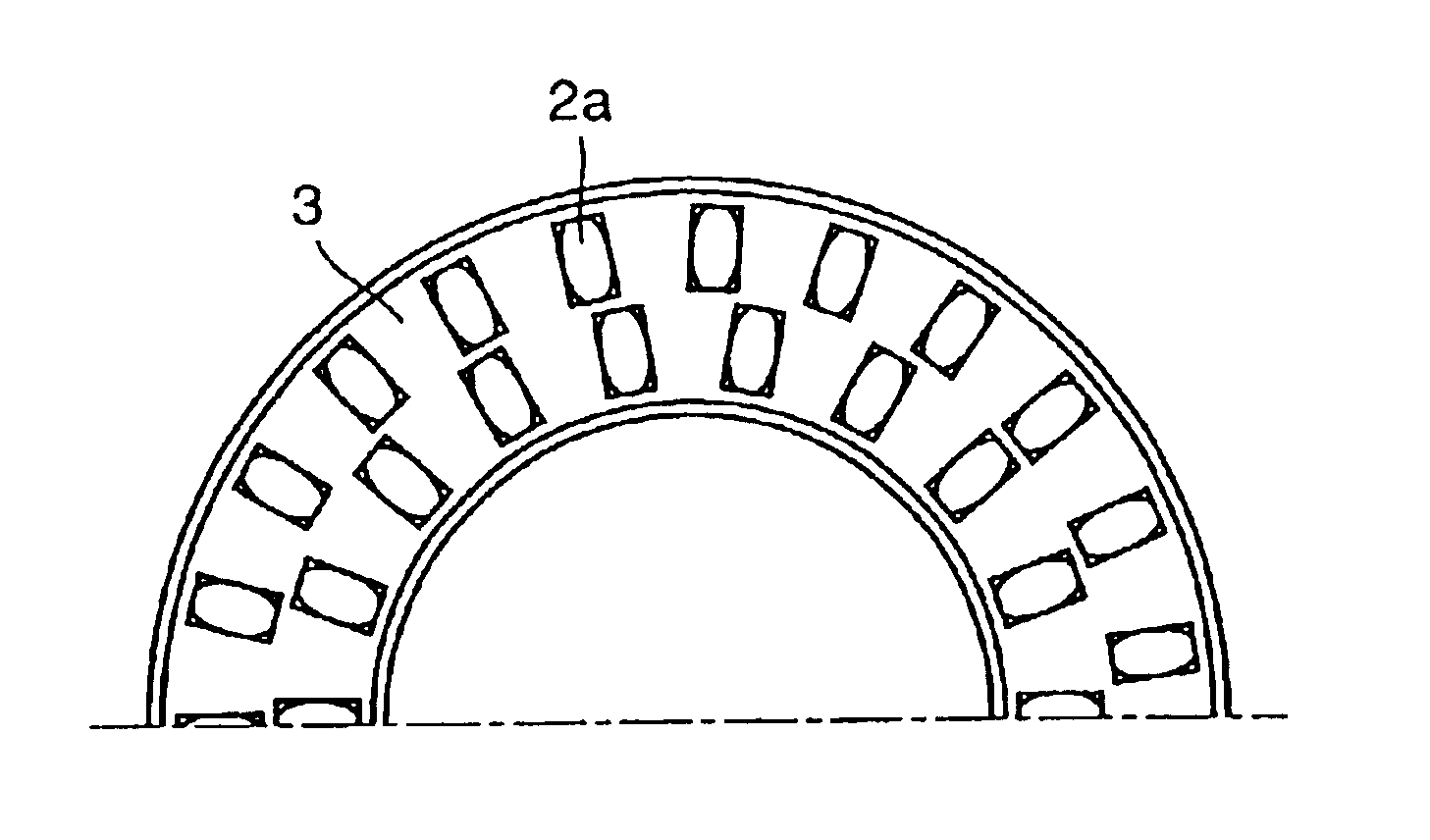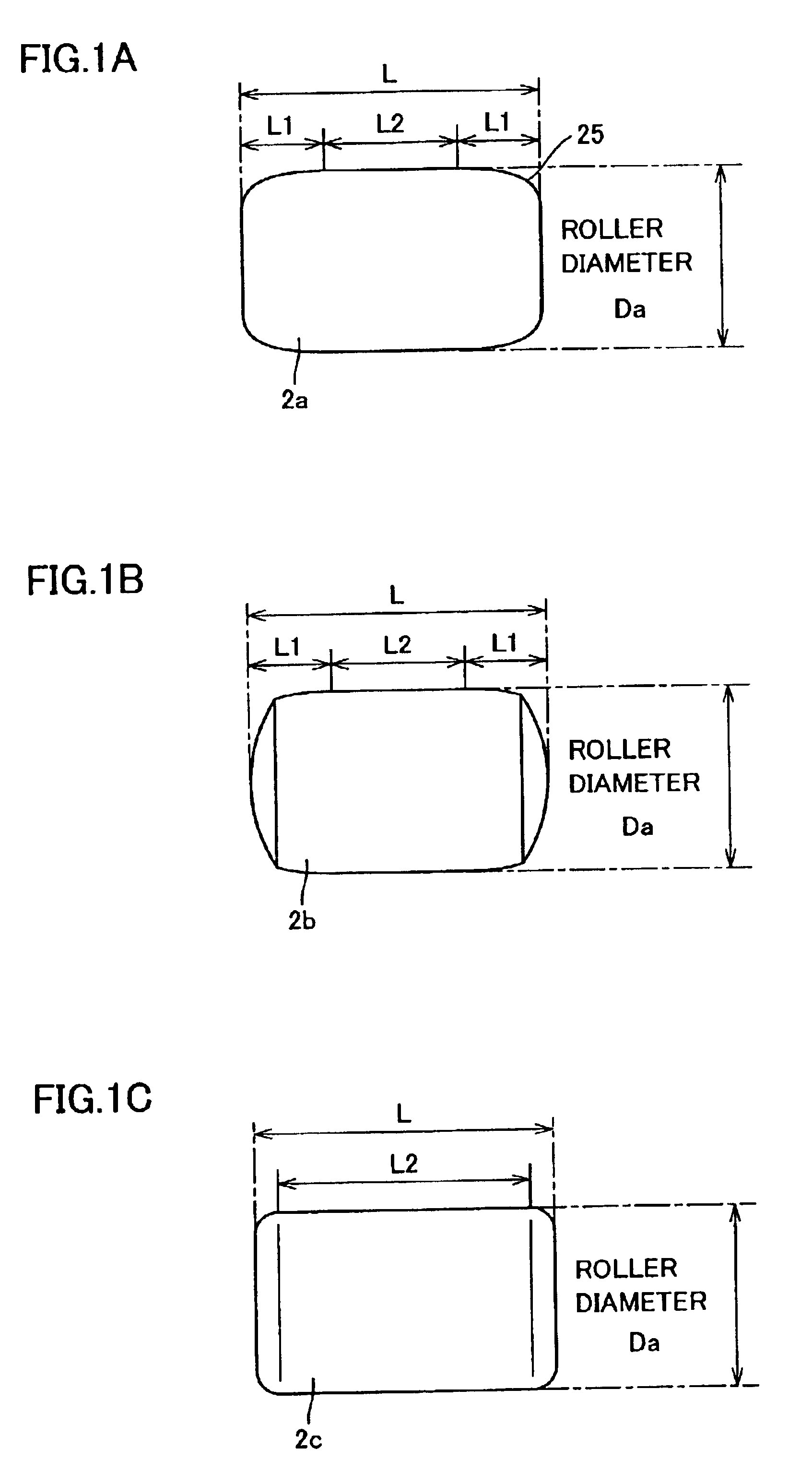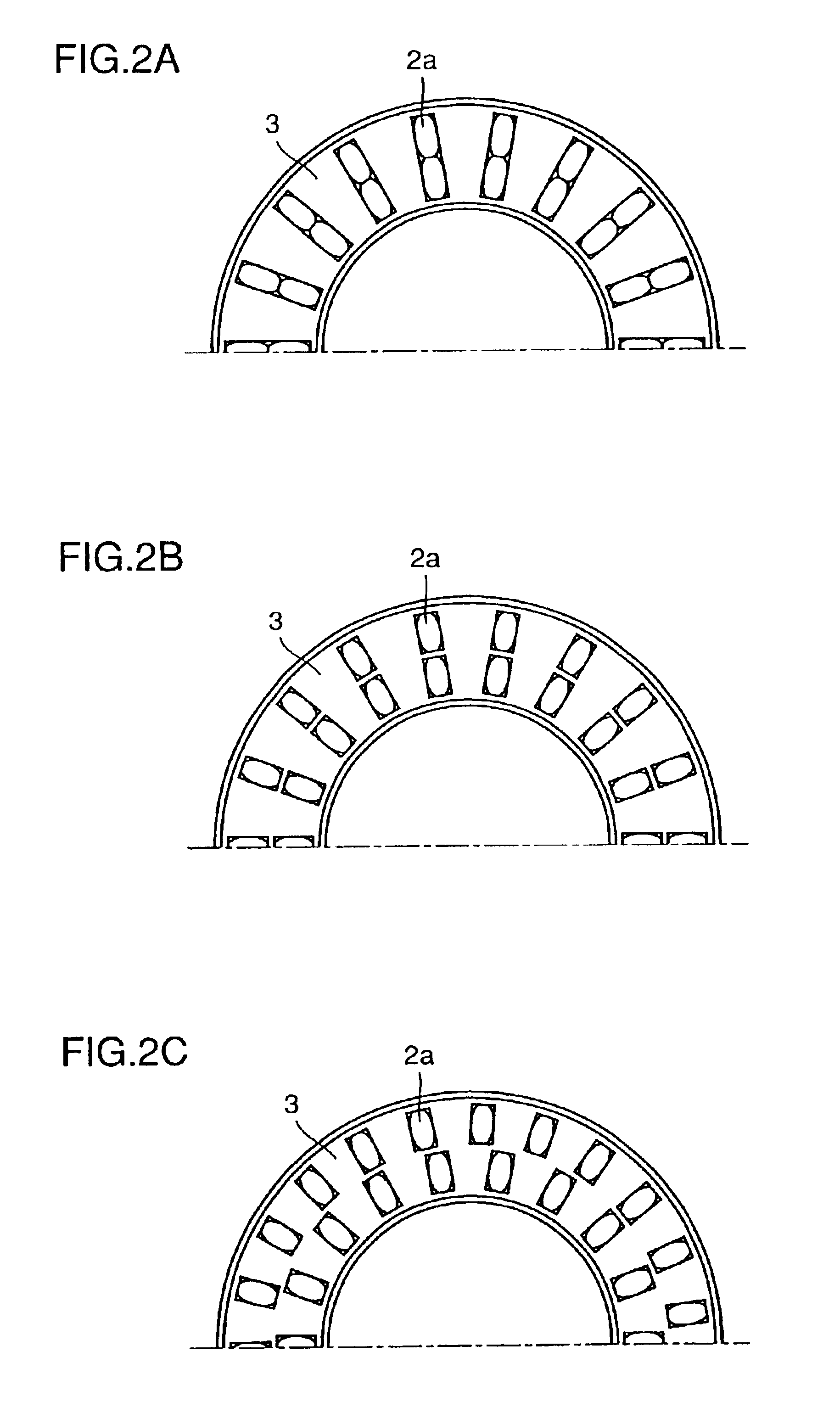Roller thrust bearing
a technology of thrust bearings and rollers, applied in the direction of machines/engines, positive displacement liquid engines, mechanical equipment, etc., can solve the problems of increasing friction loss and wear, affecting the formation of oil film on the contact surface, and affecting the load capacity of bearings in use. , to achieve the effect of reducing differential slip and excellent flaking resistan
- Summary
- Abstract
- Description
- Claims
- Application Information
AI Technical Summary
Benefits of technology
Problems solved by technology
Method used
Image
Examples
first embodiment
A longevity test was conducted using the above roller thrust bearing to verify that the present roller thrust bearing can contribute to a reduced differential slip of the roller's end surface and a reduced stress concentration in a vicinity of the roller's end, and a reduced friction loss and wear internal to the bearing to provide an increased longevity of an edge of a rolling and running portion against flaking.
The tested bearing had a roller having a diameter of 3 mm, a roller bearing ring having an inner diameter of 65 mm and an outer diameter of 85 mm. The test was conducted at a temperature of 60-80° C. with a load of 1,000 kgf at 500 rpm with a spindle oil VG2 (oil film parameter, lambda: 0.101) applied as a lubricant.
The test provided a result, as shown in Table 1, together with that of a comparative example, a needle roller thrust bearing having a standard roller and a standard cage. Longevity was represented by a 10% longevity of 10 test bearings. Note that the roller had ...
second embodiment
Two rows of crowned rollers varying in effective length and in geometry at their end surfaces were used in a test. The test provided a result, as shown in Table 2. A cage having pockets arranged radially in two rows or more (sample 5) prevented interference between rollers, enhanced the cage's ability to hold the rollers, reduced the rollers' skew to reduce friction loss and wear to provide an increased longevity against flaking, providing a ratio of 1.5 by the 10% longevity.
It is apparent from the test result that for two or more rows of rollers with a radially inner row of crowned rollers and a radially outer row of rollers less crowned than the inner rollers (sample 6) and two or more rows of rollers with a radially outer row alone formed of straight rollers (sample 7), reducing the contact surface pressure of the radially outer rollers, as compared to that of the radially inner rollers, can prevent flaking of the rollers' radially outer surfaces and a roller bearing ring's radia...
third embodiment
A test was conducted using a needle thrust bearing 1 formed of roller bearing rings 4 and 5, a rolling element (or roller) 2 arranged between the roller bearing rings, and a cage 3 holding and guiding rolling element 2, as shown in FIGS. 5A and 5B. The rolling element was a crowned rolling element. Rolling contact surfaces 6 and were formed between roller bearing rings 4 and 5 and roller 2. The needle thrust bearing had the roller bearing ring, the rolling element and the cage configured as shown in Table 3.
TABLE 3Specification ofRoller Bearing RingNo. ofcarbideSpecificationRatioPortion flakedMotor'sper unitcarbideof Roller10%inRollerCurrentareaper unitGeometryNo. ofLongevity10%BearingConsump-Sample No.(mm2)area (%)of RollerRollers(h)LongevityRingRollertion (A)3165400.5Straight1 row111 edge ofouter7 (standardinnersurfacebearing)surface3265400.5Straight2 rows282.5portionouter4.3(comparativeadjacent tosurface ofexample)radiallyradiallyinner rowouter roller3365400.5Crowned1 row544.9e...
PUM
| Property | Measurement | Unit |
|---|---|---|
| diameter size | aaaaa | aaaaa |
| depth | aaaaa | aaaaa |
| diameter size | aaaaa | aaaaa |
Abstract
Description
Claims
Application Information
 Login to View More
Login to View More - R&D
- Intellectual Property
- Life Sciences
- Materials
- Tech Scout
- Unparalleled Data Quality
- Higher Quality Content
- 60% Fewer Hallucinations
Browse by: Latest US Patents, China's latest patents, Technical Efficacy Thesaurus, Application Domain, Technology Topic, Popular Technical Reports.
© 2025 PatSnap. All rights reserved.Legal|Privacy policy|Modern Slavery Act Transparency Statement|Sitemap|About US| Contact US: help@patsnap.com



